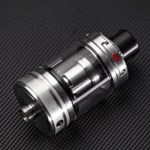Email: info@vapingkool.com Whatsapp: +86 15813806275

Why Is My Vape Tank Leaking?
Have you ever wondered why your tank leaks or why some e-liquids tend to leak more than others? Today, we’ll explore one of the most common reasons behind tank leaks, focusing on the role of propylene glycol (PG) and vegetable glycerin (VG) in e-liquids. So, let’s dive into the world of vaping science and find out why your vape might be leaking.
Understanding E-liquids
Before we delve into the experiment, let’s quickly go over what e-liquids are composed of. E-liquids, also known as vape juices, consist of various components, but two major constituents are propylene glycol (PG) and vegetable glycerin (VG). PG and VG are responsible for carrying the flavors and producing the vapor in your vape device.
The Science Experiment
To conduct our experiment, we’ll need two Pyrex beakers, some cotton, and e-liquids containing different ratios of PG and VG. Remember, this experiment is for educational purposes only, so don’t try this at home without proper guidance.
Setting up the Experiment
Let’s place some cotton in each beaker. One beaker represents a tank suitable for producing large clouds (typically using a big coil), while the other beaker symbolizes a smaller tank with tiny holes designed for mouth-to-lung vaping or lower-powered devices.
Filling the Beakers
Now, let’s fill each beaker with e-liquid, ensuring the liquid level reaches the top of the cotton. We’ll use a higher VG liquid in one beaker and a higher PG liquid in the other.
Observing the Absorption
As we pour the liquids, we’ll notice that the VG liquid takes longer to absorb into the cotton compared to the PG liquid. The viscosity of VG makes it thicker and slower to be absorbed.
The Leaking Effect
Here comes the crucial part. Imagine the beakers as vape tanks, with the cotton representing the coil. We’ll mimic the action of inverting the tanks to simulate what happens when the device is not upright.
a) For the beaker filled with the higher PG liquid:
As we tilt the beaker upside down, we observe the liquid leaking out significantly. The runny nature of PG allows it to escape through even the smallest openings, like the holes in your tank’s coil.
b) For the beaker filled with the higher VG liquid:
On the other hand, when we tilt the beaker with the higher VG liquid, we notice minimal leakage. The thickness of VG makes it less prone to leaking through small openings.
Conclusion
Based on our experiment, we can conclude that e-liquids with higher amounts of PG are more likely to leak from your vape tank compared to those with higher VG content. Viscosity plays a significant role in determining the leak potential. Tanks designed for big clouds usually have larger coils and larger wicking windows, allowing for higher VG liquids, whereas smaller tanks with tiny holes may require liquids with higher PG content.
Remember, this experiment was conducted for educational purposes, and it’s essential to follow the manufacturer’s guidelines for your specific vape device. If you experience tank leaks, considering the appropriate liquid viscosity for your tank can help mitigate this issue.
